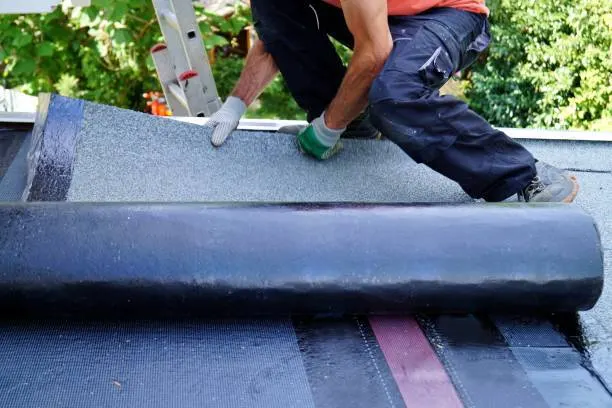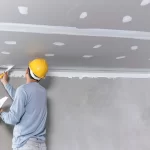When it comes to roofing, the decision to go with a flat roof installation is not one to be taken lightly. The installation of a flat roof is a significant undertaking that requires careful planning, meticulous execution, and a deep understanding of the materials and techniques involved. In this comprehensive guide, we will explore the essential steps and considerations for a successful flat roof installation to get go.
Assessing Your Roofing Needs
Understanding Your Roof Type
Before you go ahead with a flat roof installation, it’s crucial to understand that not all flat roofs are created equal. There are different types of flat roofing systems available, each with its own set of advantages and disadvantages. Here are some of the most common types:
Built-up Roofing (BUR)
Built-up roofing, often referred to as “tar and gravel” roofing, consists of multiple layers of bitumen and reinforcing fabric. It’s known for its durability and longevity, making it a popular choice for commercial buildings.
Modified Bitumen Roofing
Modified bitumen roofing is a modern twist on traditional BUR systems. It combines bitumen with modifiers to enhance its performance, making it more flexible and resistant to temperature fluctuations.
Single-Ply Membrane Roofing
Single-ply membrane roofing is a versatile option that includes materials like TPO (thermoplastic olefin), PVC (polyvinyl chloride), and EPDM (ethylene propylene diene monomer). Each offers unique benefits in terms of cost, durability, and energy efficiency.
Analyzing the existing structure is another crucial aspect of assessing your roofing needs. Factors to consider include the condition of the roof deck, the efficiency of the drainage system, insulation requirements, and the climate in your region. A thorough evaluation will help you determine the most suitable flat roofing system for your property.
Budgeting and Planning
Once you have a clear understanding of your roofing needs, it’s time to create a budget and develop a comprehensive plan. Setting a realistic budget is essential to avoid unexpected costs during the installation process. It’s also important to obtain any necessary permits and approvals from local authorities.
Choosing the right roofing materials is a critical decision that will impact the longevity and performance of your flat roof. Consider the pros and cons of each material option, taking into account factors like weather resistance, energy efficiency, and maintenance requirements. Additionally, hiring a professional roofing contractor with expertise in flat roof installations is highly recommended. Conduct thorough research, request multiple quotes, and carefully review contracts and agreements before making a final selection.
The Flat Roof Installation Process
Preparing the Roof Surface
Before the actual installation begins, the roof surface must undergo thorough preparation. Start by inspecting the roof deck for any signs of damage or deterioration. Replace any damaged sections to ensure the structural integrity of the roof. Proper drainage slopes must also be established to prevent water pooling, which can lead to leaks and damage over time.
Installing an appropriate vapor barrier is essential for moisture control and preventing condensation within the roofing system. Vapor barriers come in various types, so selecting the right one for your climate and specific requirements is crucial.
Installing Insulation
Proper insulation is essential for maintaining a comfortable indoor environment and optimizing energy efficiency. Determine the required insulation R-values based on local building codes and climate conditions. There are several insulation options for flat roofs, including:
Polyisocyanurate (ISO)
Polyisocyanurate insulation offers high R-values and excellent thermal performance. It is often used in commercial flat roof installations due to its efficiency and durability.
Extruded Polystyrene (XPS)
Extruded polystyrene insulation is moisture-resistant and provides consistent thermal insulation. It’s a popular choice for flat roofs in regions with high moisture levels.
Expanded Polystyrene (EPS)
Expanded polystyrene insulation is lightweight and cost-effective. It offers good insulation properties and is relatively easy to install.
Regardless of the insulation material chosen, proper installation techniques must be followed to ensure adequate coverage and avoid thermal bridging, which can lead to energy loss.
Roofing Membrane Application
Selecting the appropriate roofing membrane material is a critical decision. The membrane can be applied using different methods, including mechanically attached, fully adhered, and ballasted systems. Each method has its advantages and is suitable for specific situations.
Achieving a seamless and watertight seal is paramount in flat roof installation. Properly installed flashings and edge details are essential to prevent leaks at vulnerable areas. Careful termination and sealing of seams and penetrations are crucial for the long-term performance of the roofing system.
Quality Assurance and Maintenance
Final Inspection
After the flat roof installation is complete, a thorough post-installation inspection should be carried out. This inspection involves checking for any wrinkles, bubbles, or punctures in the roofing membrane. It also includes verifying that the drainage system is functioning correctly and that all details and flashings have been properly installed. Any issues identified during this inspection should be addressed promptly to ensure the roof’s integrity.
Regular Maintenance
To maximize the lifespan of your flat roof and prevent costly repairs, regular maintenance is essential. This includes routine cleaning to remove debris and inspecting seams and flashings for signs of wear or damage. Identifying and addressing minor issues early can prevent them from escalating into major problems.
Scheduling professional inspections at least annually is advisable. Experienced roofing contractors can assess the condition of your flat roof, recommend any necessary repairs or maintenance, and provide valuable guidance on extending its longevity.
Conclusion
In conclusion, a well-executed flat roof installation is a significant investment that can provide durability, energy efficiency, and peace of mind for property owners and managers. Understanding your roofing needs, budgeting and planning carefully, and following the correct installation process are all essential steps in achieving a successful flat roof installation. Additionally, regular maintenance and quality assurance measures are vital for ensuring the longevity and reliability of your flat roof. By following the guidelines outlined in this comprehensive guide, you can go ahead with confidence and enjoy the benefits of a well-installed flat roof.



